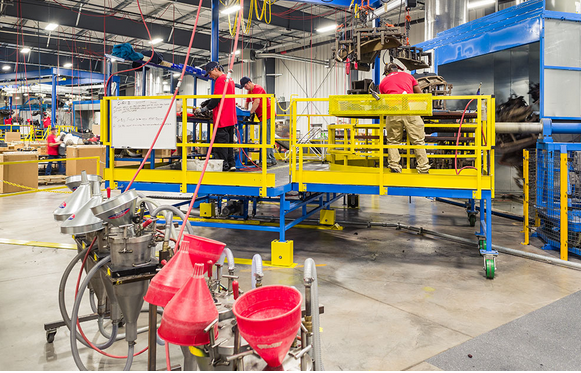
From Prototypes to Production: The Journey of Rotational Molding
Plastic material items are all around us – from packaging to playthings and even vehicle parts. But ever thought about how these plastic-type material merchandise is produced? Among the developing processes accustomed to create plastic-type merchandise is rotomolding, often known as rotational molding. With this post, we’ll plunge in the fundamentals of rotomolding, and explore why it’s turn out to be such a preferred way of Plastics Rotomolding producing plastic goods.
Rotomolding is actually a manufacturing method that entails warming thermoplastic substance in the fungus, which can be then rotated on two axis to equally spread the dissolved plastic across the mold. When the plastic-type is cooled and solidified, the mold is launched, along with the done product is taken out. The process is usually employed for greater, hollow plastic goods that can’t easily be created making use of other approaches.
There are numerous good things about utilizing rotomolding for plastic material merchandise. The most significant positive aspects is the ability to create huge, sophisticated styles. Since the melted plastic material is distributed evenly all over the fungus during rotation, the completed item can be created with sophisticated particulars and curves that could be difficult to achieve with other molding strategies. Additionally, the method can create products with very consistent walls density, that can help enhance their durability and durability.
Rotomolding is yet another highly customizable procedure. The molds used for rotomolding can be easily modified to create distinct designs or styles, meaning that organizations can readily change their item products while not having to purchase entirely new manufacturing gear. Since the approach can develop modest or large amounts of items of any size, it is possible to range up or down generation to meet need.
An additional benefit of rotomolding is that the process is highly efficient, generating hardly any squander. Scrap plastic-type material produced during the molding method can easily be recycled, helping reduce overall squander and minimize creation fees. Moreover, this process demands little human being assistance, reducing work charges and eradicating many probable causes of errors or high quality problems.
In a nutshell:
As we discussed, rotomolding is really a versatile and efficient means for making plastic material products. With the ability to produce complex styles, steady wall density, and customizable products, it is not surprising this process has grown to be so popular in several businesses. So the very next time the truth is a huge plastic-type material item, you may appreciate the ability of rotomolding that moved into producing it.